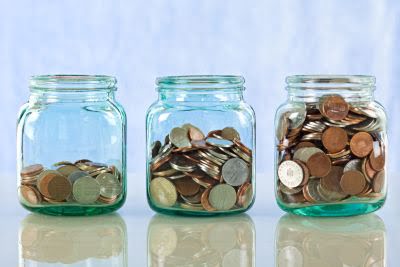You may not know the name Thomas Stanley, but chances are you’ve heard of “The Millionaire Next Door,” the blockbuster book Stanley cowrote in the mid-1990s.
The book sold more than two million copies and spawned a slew of spin-offs, including “Millionaire Minds” and “Millionaire Women Next Door.” Sadly, Stanley died last week at the age of 71 in a car accident near his home in Marietta, Ga. At the time of his death, he and his daughter, Sarah Fallaw, a psychologist, were working together on the latest iteration of the “Millionaire” series, with a fresh look at millionaires in post-recession America, according to the Atlanta Journal-Constitution.
Although Fallaw said she would continue her father’s work posthumously, it will be a while before the results of their research are published.
In the meantime, we decided to crack open “The Millionaire Next Door” and revisit some of Stanley and co-author William D. Danko’s findings.
When the duo set out to create a composite of the modern American millionaire, they conducted their own survey of 1,000 high-net-worth individuals. At the time, Stanley was a professor of marketing at Georgia State University and Danko was Stanley’s former research assistant who would go on to become a marketing professor in his own right. What they found was that most millionaires shared seven key traits in common, all of which create a lifestyle “conducive to accumulating money,” they write:
1. They live well below their means.
- In their research, Stanley and Danko found most millionaires weren’t heavy spenders.
- The majority spent less than $200 on shoes and only half could justify paying more than $235 for a wristwatch.
- Another surprising finding: two-thirds of the millionaires they surveyed said they followed a household budget.
2. They allocate their time, energy and money efficiently, in ways conducive to building wealth.
- For example, the authors found that millionaires were more likely to invest time planning their household finances than, say, shopping for a car.
- On the flipside, most people would have a lot more fun allocating time comparing car prices than sitting down with a financial planner and figuring out how much more money they have to save to be able to stop working at a certain age.
3. They believe that financial independence is more important than displaying high social status.
- “They inoculate themselves from heavy spending by constantly reminding themselves that many people who have high-status artifacts, such as expensive clothing, jewelry, cars, and pools, have little wealth,” the authors wrote.
4. Their parents did not provide “economic outpatient care.”
- Millionaires rarely become millionaires in their own right if their parents are constantly financing their lives.
- Otherwise, they risk becoming too financially dependent to make their own way.
5. Their adult children are financially self-sufficient.
- Teaching kids to be self-sufficient not only encourages them to create their own financial security but ensures that they won’t be draining their parents’ finances later on.
6. They are proficient in targeting market opportunities.
- Essentially, the wealthy become wealthy often by targeting occupations that serve other wealthy people (that’s their “market”).
- That’s where the real money is, Stanley and Danko argue. Jobs that serve the wealthy — for example, estate planning, law, accounting — often come with bigger paychecks.
7. They chose the right occupation.
- The authors found that roughly half of the millionaires they interviewed owned a business of some sort, but the vast majority said they would not encourage their children to follow in their footsteps.
- Millionaire couples with children were five times more likely to send their children to medical school than other parents in America and four times more likely to send them to law school, according to their findings.
Stanley and Danko’s findings may still ring true today, but the audience couldn’t be more different. When the book was published in 1996, the economy was booming and most people we were blissfully unaware of the pending dot-com bubble and bust. And no one knew that in just over a decade, the Great Recession would squeeze the middle class beyond recognition and deeply divide the rich and the poor.
“The Millionaire Next Door” encourages the view that the real millionaires of America — the frugal spenders, the self-made entrepreneurs, the savers “next door” who don’t seek attention or flaunt their wealth — haven’t actually done anything all that extraordinary to achieve financial success.
But, if we learned anything from the Great Recession, it’s that unanticipated setbacks — a job loss, an unlucky diagnosis, a bad mortgage loan, a spouse’s unexpected death — can send anyone’s personal finances teetering. Not to mention factors beyond most people’s control, such as lagging wage growth and rapidly increased fixed costs like housing, health care and education. Despite all we’ve been through, however, the message that anyone can accumulate wealth if they put the work in is one that still sells in America. Books like Stanley's can help inspire good financial habits, but the reality facing most workers today is that they’ll need much more than a seven-step guide to get them there.
http://finance.yahoo.com/news/author-of-%E2%80%9Cthe-millionaire-next-door%E2%80%9D-dies-%E2%80%94-7-key-insights-from-his-book-213300777.html
